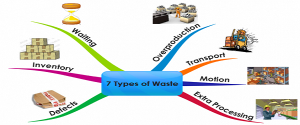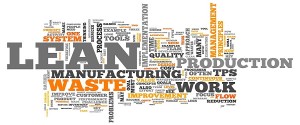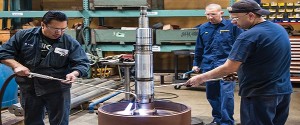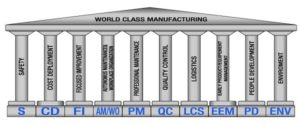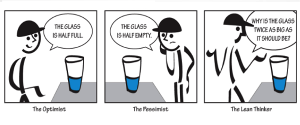
Overproduction occurs when a company manufacturers a product before there is a customer demand. Overproduction can occur with individual processes or across the entire value stream. The result of overproduction is excessive inventory, higher capital requirements, high obsolete and excess inventory expense, and additional product damage.
Cause of Overproduction
Incentives can create an environment that unintentionally encourages and rewards overproduction. At the corporate level, the accounting policies will often incentivize overproduction. This is a result of the way companies account for expenses. Materials, labor and overhead are allocated to finished goods as product is manufactured. This is designed to properly tie expenses to the products that generated the expenses. Because overhead expenses are fixed, when the costs are absorbed does not change the costs. The result of tying absorption to production independent of demand is a system that encourages overproduction.
Make-to-stock systems create overproduction by design. In a make-to-stock system, goods are produced in advance of demand. This is the definition of overproduction.
Forecasting errors will cause overproduction. Organizations that manufacture to a sales forecast instead of actual demand will have errors. The errors will cause too much of some products and too little of other products to be made.
Poor communication from customers can lead to overproduction as information about demand changes is not rapidly communicated to the production planners.
Poor quality can also lead to overproduction. When the quality of a process is unpredictable and uncontrolled, planners will schedule more production than is needed to ensure an adequate number of good parts make it through the process. When process yields are better than average, the number of good parts produced will exceed the plan.
Results of Overproduction
The most obvious result of overproduction is an increase in inventory levels. This occurs as the extra production must be stored until it is needed (or disposed of). There are a number of other problems and costs associated with overproduction.
In processes with bottlenecks, any overproduction of an item could result in a capacity or material shortage of another, more urgently needed item.
Overproduction will often increase motion and transportation waste as bigger lot sizes result in less efficient work cell designs and more movement to and from storage locations.
Overproduction will also increase the amount of obsolete and excess inventory that needs to be discarded. In a make- to-order environment, there should never be obsolete or excess inventory. Every item produced is earmarked for a customer.
Solutions for Overproduction
In the short run, companies can implement tighter controls on scheduling and forecasting to reduce variances and overproduction. As lean techniques are implemented, more significant changes can be undertaken. One major shift is from make-to-stock to make-to-order. As a company shifts to a pull system, overproduction is naturally eliminated since production is originated by customer demand.
Increasing communication between the company, suppliers and customers can also reduce overproduction as changes and demand are reacted to much faster.
Any activity that shortens lead times will allow for the reduction of inventory and a corresponding reduction in overproduction. Quality improvements will also allow for lower overproduction.
It is essential for a company’s incentives to be re-designed to minimize overproduction and excess inventory. As long as overproduction is rewarded, it will continue.
